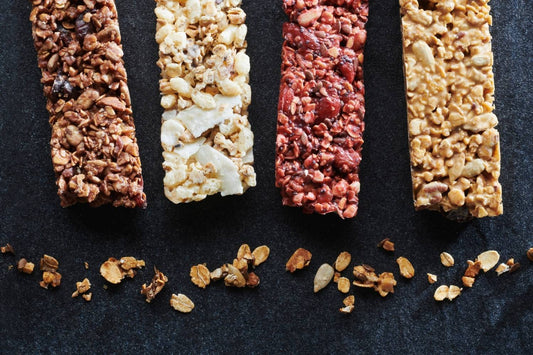

Intermediate
1h20min
18min
8 puff pastry brioches
An exclusive recipe by Gwendal Pecher, chef and co-founder of Clem & Gwen bakeries and patisseries
Utensils:
- Stand mixer
- Dough hook
- Scraper
- 8 6cm-diameter rings
- Spatula
- Immersion blender
- Thermometer
Made with the products below :
1. Tonka bean infused milk
Ingredients :
- 125g Milk
- ½ Tonka bean
Preparation time: 5 minutes
Rest time: Overnight
Steps:
- Infuse the grated tonka bean in the cold milk overnight.
- Strain the milk the next day and save it for the puff pastry step.
2. Reasoned indulgence intense Azélia 35% chocolate ganache
Ingredients :
- 120g Milk
- 80g Whipping cream
- 6g Sugar
- 2g Pectin X58
- 250g AZÉLIA 35% chocolate
- 30g Cocoa butter
Preparation time: 20 minutes
Refrigerate for: 12 hours
Steps:
- Heat the milk and cream to 105/115°F (40/45°C).
- Stir in the sugar and pectin mixture and bring it to a boil for a few seconds to activate the pectin.
- When the pectin base is hot, emulsify it with a spatula by gradually combining it with the cocoa butter and partially melted chocolate.
- Mix vigorously using an immersion blender as soon as possible to perfect the emulsion.
- Leave to set for 12 hours at 40°F (4°C).
3. Puff pastry brioche
Ingredients :
- 500g Pastry flour
- 125g Eggs
- 125g Infused milk
- 10g Salt
- 60g Sugar
- 20g Baker’s yeast
- 125g Butter
- 1 NOROHY vanilla bean
- 10g VALRHONA cocoa powder
- 333g European-style butter
Preparation time: 45 minutes
Refrigerate for: 3 to 4 hours
Freeze for: 30 minutes
Proofing time: 1 hour 30 minutes
Bake for: 16 to 18 minutes
- KNEADING:
- Place the eggs, infused milk, scraped vanilla bean, baker’s yeast, flour, cocoa powder, salt, and sugar in the bowl.
- Knead with a dough hook for 8 to 10 minutes on the lowest speed, then on a higher speed at the end.
- Next, add the first portion of butter and knead at the lowest speed. Once the dough is smooth, refrigerate for 3 to 4 hours.
- LAMINATING:
- Roll out the cold brioche dough into a 26cm × 36cm rectangle. Spread the European-style butter into an 18cm × 25cm rectangle. Place the butter in the middle of the dough rectangle, fold its sides over it, then roll out the dough to a width of 18cm and a length of 50cm to perform a double turn.
- Freeze for 15 minutes.
- Roll out the dough to a width of 18cm and a length of 40cm to give ita letter fold.
- Freeze for 15 minutes.
- Roll out the brioche dough into a 24cm wide and 50cm long rectangle.
- Cut it into 4cm × 22cm strips.Roll up the strips, arrange them in the 6cm diameter rings and let them rise for about 1 hour 30 minutes at 80°F (28°C).
- Bake at 320°F (160°C) for 16/18 minutes.
Assembly of the puff pastry brioches
- Insert the tip of the piping bag into the bottom of each brioche to fill it with ganache.
- Pipe a rosette of ganache onto the top of each brioche with a fluted nozzle.

Can I replace tonka bean if I don’t have it?
Yes, you may substitute with vanilla or cardamom for example, though the flavor profile will be different.
Is pastry flour required?
Pastry or bread flour is recommended for gluten strength. All-purpose flour may result in less structure.
Do I need a stand mixer with a dough hook ?
It is highly recommended for proper gluten development, though hand kneading is possible with extra effort.
What if I don’t have pastry rings?
You can shape the dough freehand or use muffin tins, though the look will differ.
Why is a thermometer important?
It ensures the milk-cream mixture reaches the correct temperature (105–115°F) to activate the pectin in the ganache.
Why prepare the ganache a day ahead?
It requires at least 12 hours of resting time in the refrigerator to set and achieve the perfect texture for piping.
Can I prepare the dough the night before?
Yes, the dough can be refrigerated overnight before laminating.
How long will the brioches stay fresh?
They are best enjoyed the same day but remain soft for up to 2 days in an airtight container.
My dough feels sticky after kneading, what’s wrong?
This is normal initially. Once the butter is incorporated and gluten develops, the dough should smooth out.
Why is proofing time important?
Allowing the dough to rise properly ensures light, airy layers and prevents dense texture.



